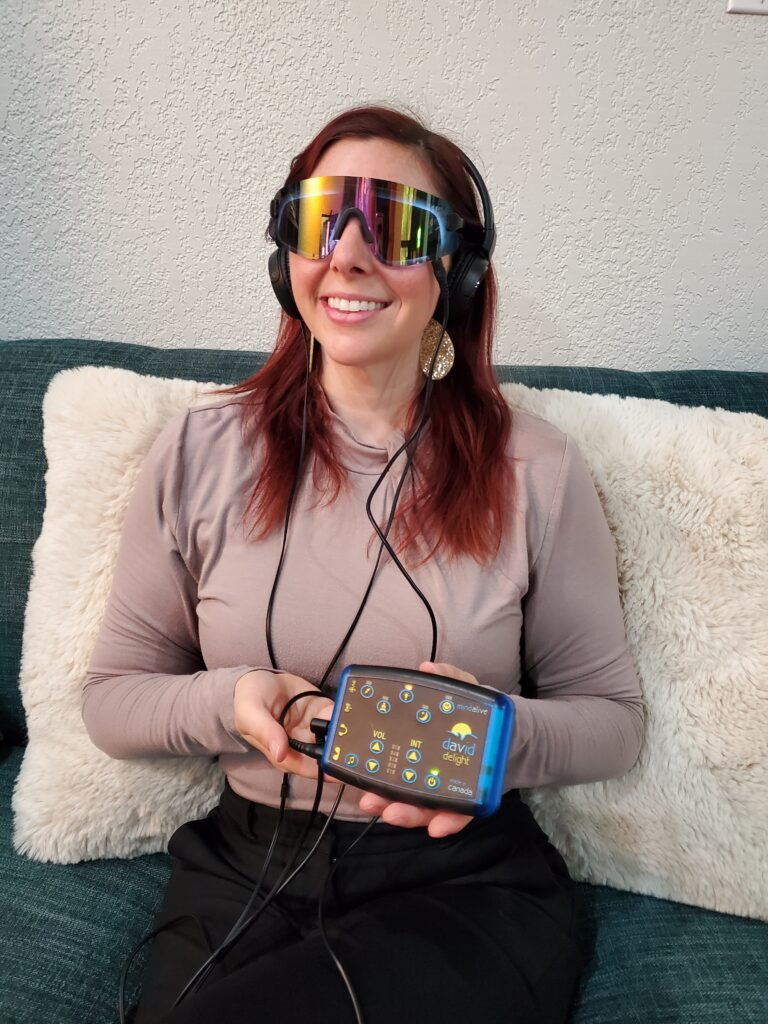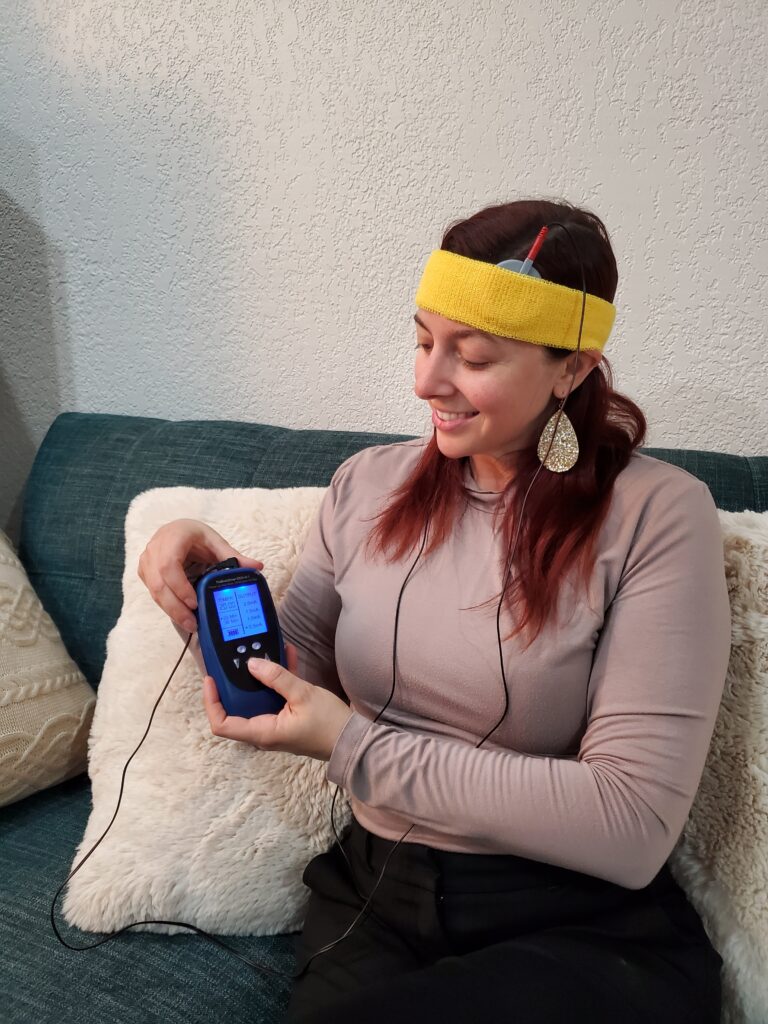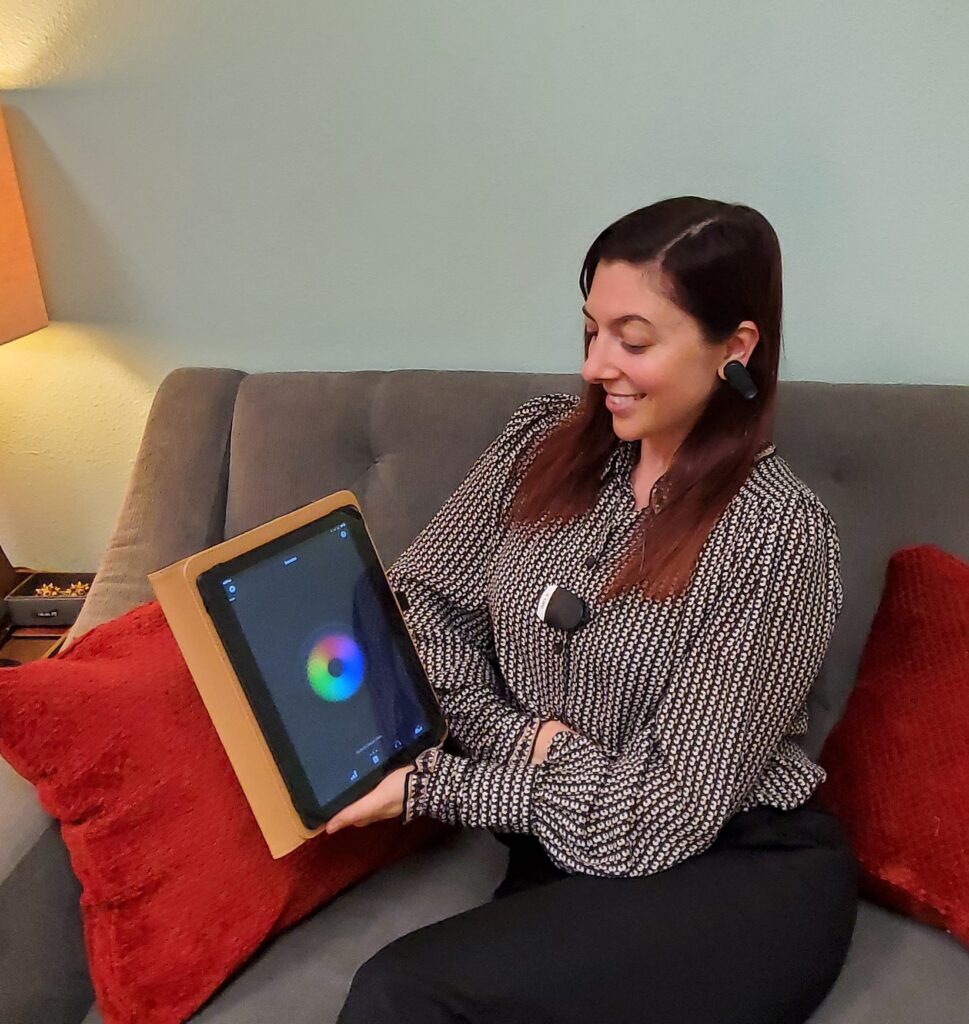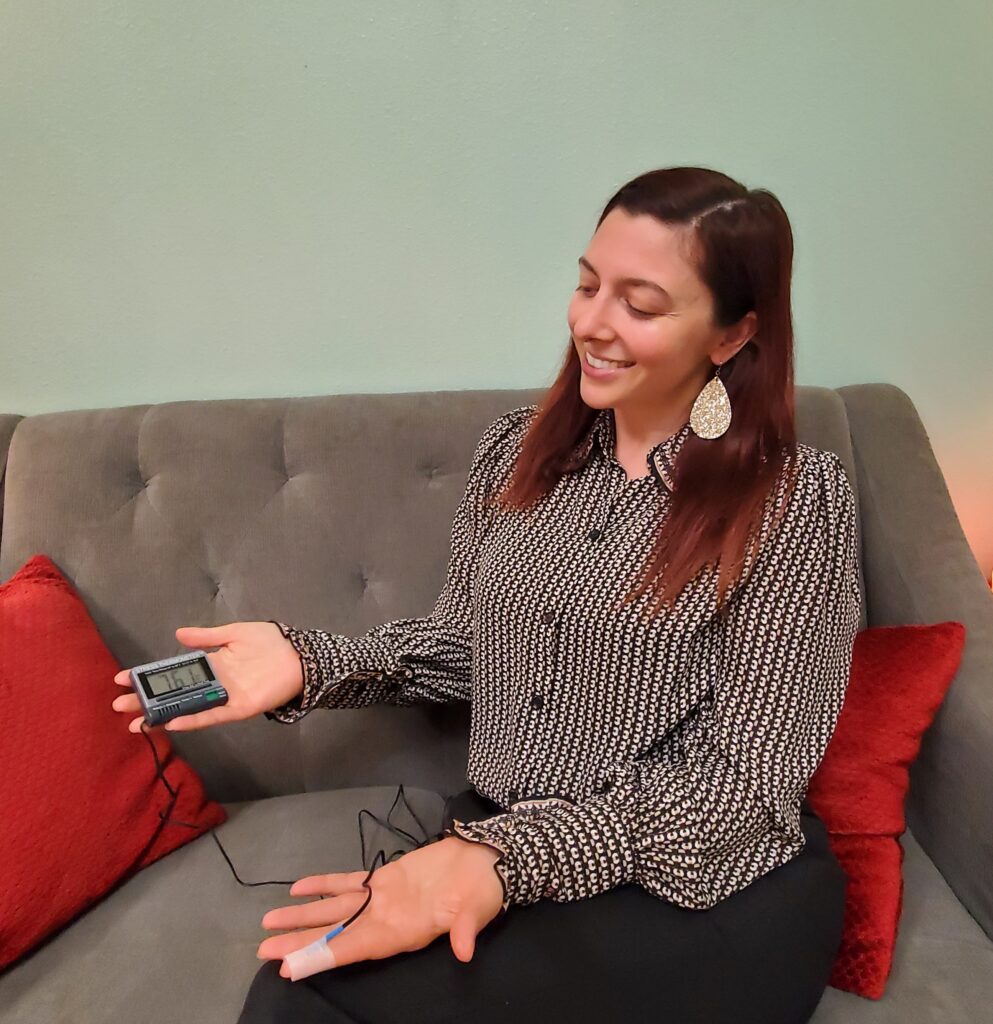For more information email Neurofeedback@InMindOut.com.
What are supplemental devices?
Supplemental devices are devices that you can use at home to increase cognitive functioning and assists with many different symptoms. There are a few types of supplemental devices. We carry Audio-Visual Entrainment (AVE), Transcranial Direct Current Stimulation (TDCS) devices and Heart Rate Variability sensor devices.


Audio-Visual Entrainment (AVE) devices use flashes of lights and pulses of tones to guide the brain into various states of brainwave activity. AVE devices are often termed light and sound machines or mind machines. We offer the David’s Delight.
Audio-Visual Entrainment (AVE) devices can help with:
- Mood Instability
- Improve Sleep Patterns
- Enhance concentration and focus.
- Increase the level of relaxation.
- Anxiety
- Worry
Click on the video for a demonstration of the David’s Delight.
Transcranial Direct Current Stimulation (TDCS) device is a non-invasive, painless brain stimulation treatment that uses direct electrical currents to stimulate specific parts of the brain. A constant, low-intensity current is passed through one electrode placed over the head which modulates neuronal activity.
Transcranial Direct Current Stimulation (TDCS) devices can help:
- Enhance language and mathematical ability
- Attention Span
- Problem Solving
- Memory
- Coordination
- Depression
- Anxiety
- PTSD
- Chronic Pain

Click on the video for a demonstration of the TDCS.

The Inner Balance by HeartMath is a non-invasive device that is made up of a wired heart rate variability sensor that clips to your ear and provides you with real-time feedback via the InnerBalance app. This device allows you to synchronize your heart and body to achieve a calm, alert state. This state of composure and inner clarity is called coherence which can -with practice- be accessed in times of stress.
Heart Rate Variability sensor devices can help:
- Increase Mind/Body Coherence
- Manage Stress
- Emotional Regulation
- Enhance Cognitive Functioning
- Increase Parasympathetic Activity
Stress thermometers are devices used to visually represent a person’s level of stress using a temperature sensor that is taped to one’s finger. When stressed, the blood vessels beneath the surface of your skin contract and re-direct the flow of blood to major muscles and organs, which causes the hands and feet to feel cold. Using this concept, stress thermometers utilize finger temperature measurements to offer feedback, aiding individuals in regulating their temperatures to alleviate stress. These are available for $39 per week.
- Manage Stress
- Emotional Regulation
- Lower Blood pressure
- Eliminate Headaches
- Enhance sleep

Benefits of Supplemental Devices
- A non-invasive and pain-free treatment
- May reduce the need for medication.
- May provide treatment alternatives for those who cannot tolerate medication.
- Provides other options when medication has not been effective.
- An effective addition to traditional treatment modalities
- Helps individuals take charge of their health.
- Improves language and mathematical ability.
- Stress reduction.
- Increased attention and concentration
- Relief from feelings of anxiety and depression
Information to Consider:
Here at InMindOut, we want to provide you with all of the information we can to help you make an informed decision. Please keep the following in mind:
- For Audio-Visual Entrainment (AVE) devices, use is not recommended for migraines or if you experience seizures.
- For Transcranial Direct Current Stimulation (TDCS) devices, use is not recommended if you have an internal implant of any kind.
Research Articles on Transcranial Direct Current Stimulation (TDCS) devices:
Research Articles on Audio Visual Entrainment (AVE) devices:
- Audio-Visual Entrainment Program as a Treatment for Behavior Disorders in a School Setting
- A randomized controlled trial (RCT) to explore the effect of audio-visual entrainment among psychological disorders.
- Applying Audio-Visual Entrainment Technology for Attention and Learning
- A Controlled Comparison of Audio-Visual Entrainment for Treating Seasonal Affective Disorder
Research Articles on Thermal (Temperature) Biofeedback:
- Biofeedback and Mental Health
- Biofeedback-Based Connected Mental Health Interventions for Anxiety: Systematic Literature Review
- Biofeedback for Psychiatric Disorders: A Systematic Review
- Cellular phone-based Biofeedback to treat physical and mental disorders.
- General and Specific Applications of Thermal Biofeedback
- A controlled evaluation of thermal biofeedback and thermal biofeedback combined with cognitive therapy in the treatment of vascular headache.
Research Articles on Heart Rate Variability Biofeedback:
- The relationship between mental and physical health: Insights from the study of heart rate variability
- Heart rate variability: Can it serve as a marker of mental health resilience? Special Section on “Translational and Neuroscience Studies in Affective Disorders” Section Editor, Maria Nobile MD, PhD
- Heart Rate Variability in Mental Health and Psychotherapy
- Anxiety Disorders are Associated with Reduced Heart Rate Variability: A Meta-Analysis